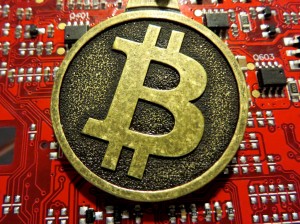The contents of the report itself seem to be mostly a summary of the recent developments at Mt.Gox for an audience largely unfamiliar with the technical terms of the Bitcoin community. It appears to be intended to put the recent developments at Mt.Gox into a context more familiar to the financial industry. For instance, writing about how the Mt.Gox customer base behaved following the lockdown of transactions in early February, Normand states:
If such a restriction sounds a bit like the exchange controls that pop up intermittently with fiat currencies (Cyprus in 2013, Argentina this year), that’s because there are some parallels.”
Normand’s take on the “saga” of Mt.Gox is twofold: Technical issues clearly played a part in the drop in the recent price volatility, as evidenced by both BitStamp and BTC-e suspending trades along with Mt.Gox. But the report concluded that the overall harm from the seeming failure of Mt.Gox shows a resiliency in the Bitcoin market as a whole.
The optimistic view of these events is that a two-tier market in a virtual currency is more benign than one in fiat currencies because it reflects operational risks around a particular exchange rather than those surrounding an entire sovereign and its financial system.”
The most interesting thing about the brief report may not be the actual contents, however. Normand’s report shows that J.P. Morgan’s recent interest in Bitcoin wasn’t just a passing curiosity.














